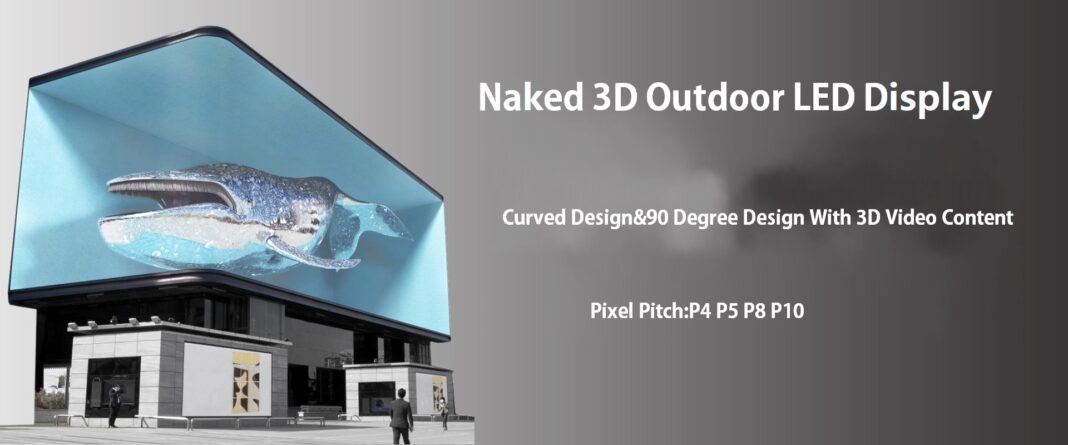In today’s visually driven world, standing out is more crucial than ever. Enter 3D LED Signage: The Future of Visual Communication —a vibrant, eye-catching solution that captivates audiences and elevates brand visibility. Whether it’s in a bustling retail environment or a corporate office, these signs have transformed the way we communicate visually.
What is 3D LED Signage?
At its core, 3D LED signage utilizes light-emitting diodes to create dynamic, three-dimensional displays. Unlike traditional 2D signs, 3D LED signage adds depth and dimension, making it visually striking. Picture a glowing logo that not only shines but also pops out, drawing attention from all angles.
Benefits of 3D LED Signage
Why choose 3D LED signage over other options? Here are some standout benefits:
- Enhanced Visibility: The three-dimensional design combined with ensures that your message is seen, even from a distance.
- Creative Possibilities: With the ability to design custom shapes and animations, the only limit is your imagination.
- Energy Efficiency: LEDs consume less power compared to traditional lighting, making them a cost-effective option in the long run.
Applications of 3D LED Signage
3D LED signage is versatile and finds application in various settings:
- Retail Environments: From storefronts to in-store displays, these signs attract customers and enhance the shopping experience.
- Events and Exhibitions: At trade shows or events, dynamic signage can create a buzz and draw in attendees.
- Corporate Branding: Businesses use LED signage to reinforce brand identity and convey professionalism.
How 3D Signage Works
The magic of 3D LED signage lies in its technology. By utilizing advanced LED technology, manufacturers can create vibrant displays that can be designed in various shapes and sizes. The design process often involves 3D modeling software, ensuring that the final product meets specific visual requirements.
Choosing the Right 3D LED Signage
Selecting the right signage is critical. Consider these factors:
- Size and Placement: Ensure the sign is proportionate to the space and can be easily viewed by passersby.
- Design Intent: What message do you want to convey? The design should align with your brand and marketing goals.
Installation Process
While some may opt for DIY installation, hiring professionals can ensure that everything is mounted securely and correctly. Safety is paramount; improper installation can lead to issues down the line.
Maintenance of 3D LED Signage
Regular maintenance is essential for keeping your signage looking its best. This includes cleaning the surface and checking the LED lights for any outages. Troubleshooting common issues, such as flickering or dimming, can often be handled with simple fixes.
Cost Factors
While the initial investment in 3D signage might seem steep, it’s crucial to consider the long-term savings from energy efficiency and durability. Budgeting for signage should account for installation, maintenance, and potential upgrades.
Regulations and Compliance
Before installing 3D signage, check local zoning laws and safety regulations. Compliance ensures that your signage is legal and safe for public viewing.
Future of 3D LED Signage
As technology advances, so too does the potential for LED signage. Expect to see trends such as integration with augmented reality, interactive displays, and even smart technology that responds to viewer engagement.
Case Studies
Many brands have successfully leveraged LED signage to enhance their visibility and brand presence. By analyzing these case studies, businesses can glean valuable insights into effective signage strategies.
Comparison with Other Signage Types
When comparing LED signage to traditional options, the benefits become clear. LEDs offer superior brightness, longer life spans, and flexibility in design, making them a preferred choice for modern advertising.
Conclusion
In a world where first impressions matter, LED signage stands out as a powerful tool for communication. Its ability to captivate audiences and enhance brand visibility makes it a worthy investment for businesses of all sizes.
FAQs
What is 3D LED signage?
- 3D LED signage refers to illuminated displays that use light-emitting diodes (LEDs) to create visually striking three-dimensional signs, providing depth and dimension compared to traditional flat signage.
What are the benefits of using LED signage?
- Benefits include enhanced visibility, creative design options, energy efficiency, and the ability to attract more attention compared to standard signage.
Where can LED signage be used?
- It can be used in various environments, including retail stores, corporate offices, trade shows, restaurants, and outdoor advertising.
How does LED signage work?
- LED signage operates by using LEDs to illuminate custom-shaped designs, often incorporating advanced technology for vibrant colors and animations.
What should I consider when choosing LED signage?
- Consider factors like size, placement, design intent, budget, and local regulations to ensure the signage meets your needs and complies with local laws.
How is 3D LED signage installed?
- Installation can be done by professionals or as a DIY project, but it’s crucial to ensure proper mounting and electrical connections for safety and effectiveness.
What maintenance is required for 3D LED signage?
- Regular maintenance includes cleaning the sign, checking for burned-out LEDs, and ensuring electrical components are functioning properly.
Is 3D LED energy-efficient?
- Yes, LED technology is known for its energy efficiency, consuming significantly less power compared to traditional lighting solutions.
What are the costs associated with 3D signage?
- Costs vary widely based on size, design complexity, and installation, but businesses often find that the long-term savings in energy and durability offset the initial investment.
Do I need a permit to install LED signage?
- Depending on local regulations and zoning laws, permits may be required. It’s advisable to check with local authorities before proceeding with installation.







